Gamification in Theory and Practice Seminar—Designing an App
Gamification in Theory and Practice Seminar—Designing an App
Franziska Zimmer
Department of Information Science at Heinrich Heine University Düsseldorf in Germany
Katrin Scheibe
Department of Information Science at Heinrich Heine University Düsseldorf in Germany
A technology trend—Gamification
If video games and their game elements are attractive to the younger generation, why not offer a practical course about game elements and how to integrate them into (mobile) applications? Students and their ideas are given free rein. Within one semester, they conceptualize their own app idea. From aliens exploring earth, to community wellbeing and Korean skincare—gamification can be applied in many ways and represents one of the biggest technological trends of the last decade (Xi & Hamari, 2020).
Gamification is aimed at making mundane or troublesome tasks more enjoyable by rewarding the users of applications and systems (Deterding et al., 2011). To put it another way: “gamification [is] the use of game design elements in non-game contexts” (Deterding et al., 2011, p. 1). The most popular gamification elements (game design elements) are points (as in being rewarded for fulfilling a task), leaderboards (to measure one’s progress in context with others), achievements/rewards (to feel satisfaction), or gifting (to show one’s appreciation towards others—especially popular on live streaming services) (Hamari et al., 2014; Zichermann & Cunningham, 2011).
—Gamification can be applied in many ways and represents one of the biggest technological trends of the last decade—
The areas for implementation are vast, ranging from government services and public engagement, to crowdsourcing, commerce and even fitness and exercise (Ilhan & Fietkiewicz, 2019), marketing and advertising, for environmental behavior, and overarching information systems (Koivisto & Hamari). To name a few examples of familiar apps that implement gamification elements, the fitness apps Fitbit or GARMIN come to mind. These apps are designed to keep track of users’ fitness level and different metrics one is interested in. The users are encouraged by obtaining points for different activities and reaching fitness goals such as running the first 10km or reaching a goal of 10,000 steps a day. Another commercially successful example are live streaming services and their application of gamification elements (e.g., gifting or leaderboards) (Scheibe, 2018; Zimmer et al., 2020). Prevalent examples would be, for mainly English-speaking areas such as the US and Europe, Twitch, whereas in China, we observe a billion Dollar industry sprouting from the live streaming service industry (e.g., Douyin or TikTok) in combination with e-commerce and also, gamification elements (see for example Alibaba’s Taobao) (Marszałek, 2022; Scheibe & Zimmer, 2019).
Gamification—A theoretical and practical topic for students
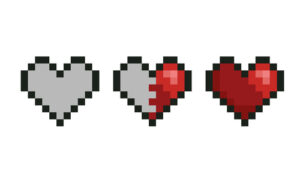
This is where the idea for our seminar was born. Since 2020, we offer all students of Heinrich Heine University Düsseldorf (no matter which subject, if bachelor or master student) the possibility to join the class Gamification in Theory and Practice. Here, students need to think about areas of life that could be made more enjoyable, easier to use and fun. The students develop their own projects, often relating to issues that are important to them (e.g., sustainable living or proper care for dogs), are part of their daily lives (e.g., skin care) or are helpful to the community.
They could work on their own framework for a mobile or desktop application and combine it with several gamification elements, expanding on their ideas together by discussing the progress during the seminar. For a theoretical background, we talked about intrinsic and extrinsic motivation, flow theory, player types, gamification elements and several necessary steps for app development.
Some student projects examples
A few of the many great student projects at Heinrich Heine University are described in the following chapter. Some comments on the development of the projects are provided. The students also talked about the transition into online seminars, a new challenge experienced by many. For some, it was their first semester at university. Note: All statements were translated by the authors of this article from German to English and were proofread by the students.
VanFix
An app for community wellbeing was developed by Samer Osman (Computer Science, BSc) and Marco Steinke (Computer Science, BSc). They already have implemented some of the first features of their app VanFix (Figure 1). A beta version to try out is available via the following link: https://bestofcode.net/Gamification/index.html. How can a community help to look after and feel responsible for the city they live in? With VanFix people can report any damages or litter observed in the city to the city administration. The app is aimed at providing a single point of contact to fix several issues at once; the responsible city administration can delegate the tasks accordingly among their staff, e.g., to waste collectors or repair workers. The feature of a social network is important to help fostering a sense of community. Some of the many other gamification elements such as badges and points are aimed at making the usage of the app more fun, as points are rewarded for posting observed issues. For competitive aspects there is also a leaderboard available.

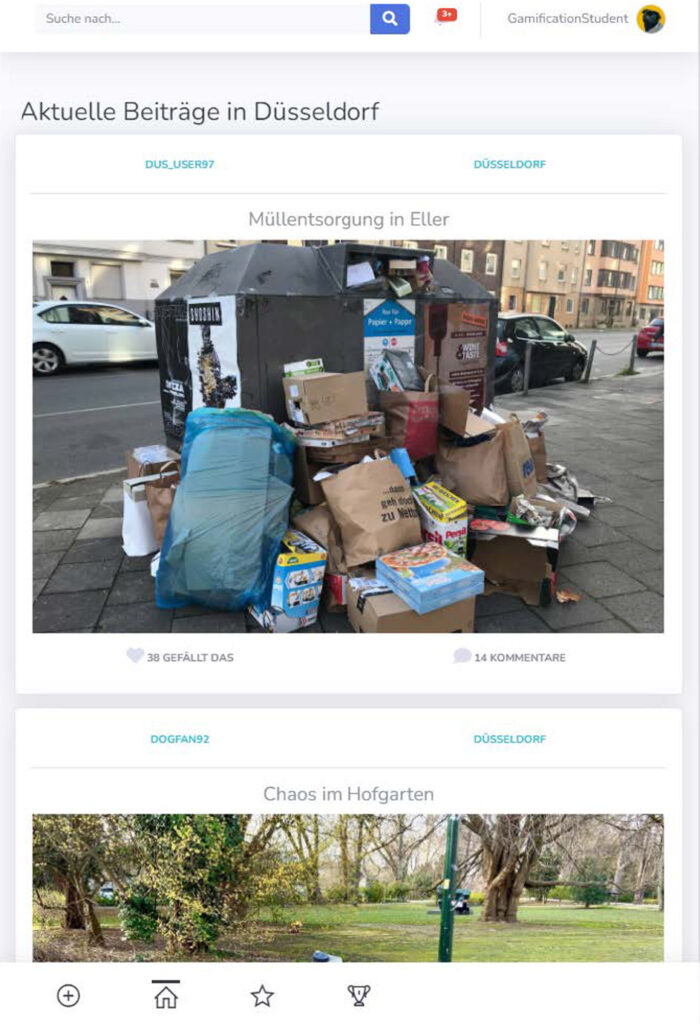
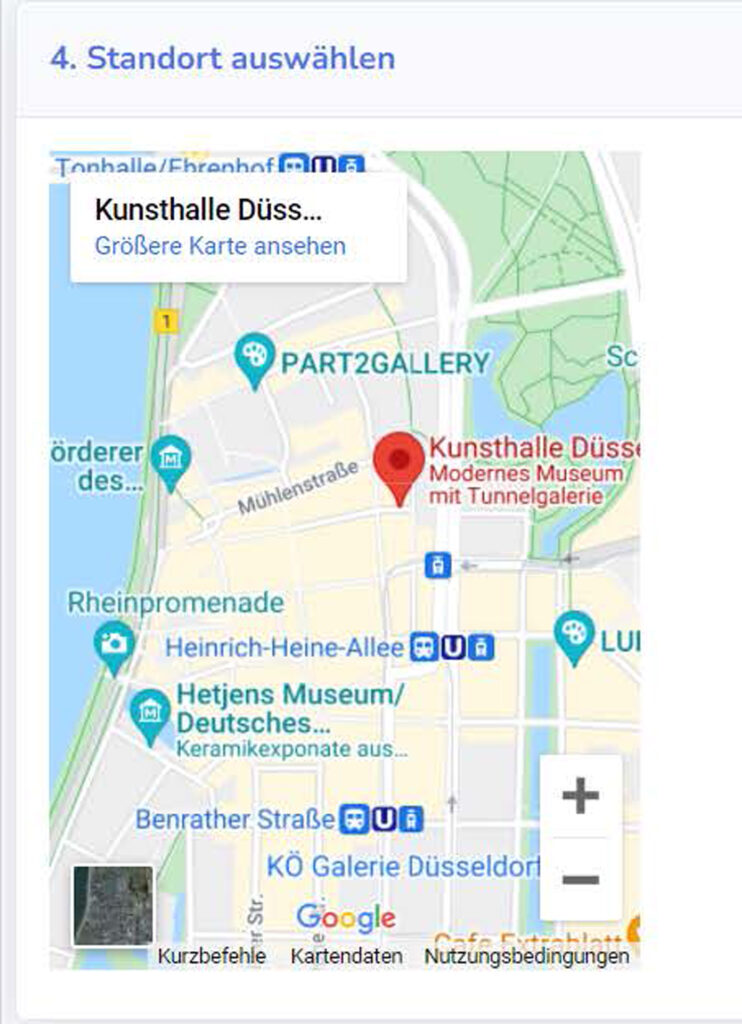
Figure 1. Mockups of VanFix. First picture: profile; second picture: feed; third picture: step four of creating a post – marking a spot. Student project VanFix, winter term 2021/2022 at Heinrich Heine University by S. Osman and M. Steinke.
Samer: “I especially liked the atmosphere during the seminar. We could actively work on exercises and present our ideas. In the end, we worked out an interesting project that helped us to incorporate our knowledge about gamification elements in a practical way and to have fun with the development of our own project at the same time.”
Good Green
The following example is also related to the community and environment. GOOD GREEN by Lukas Rach (Chemistry, BSc) and Patrice Plassmann (Chemistry, BSc) was imagined to serve as a first step to make people familiar with topics such as sustainability and consumption (Figure 2). Additionally, the user receives guidance on how to act more mindful and receives great tips—using the bike instead of the car. A forum dedicated to plants is part of the app to make discovering new flowers and trees easier, to encourage the users to have their own plants at home and to rediscover their own garden. Gamification elements like points help to motivate the user. Redeemable points are a great way to provide further incentives—after receiving a certain amount of points they can be exchanged to plant a real tree. Achievements help to motivate the user, e.g., after using the bike five times an achievement will be unlocked or after planting 25 trees one receives a badge visible to other members.

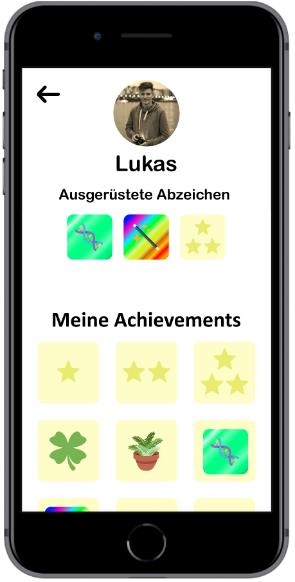
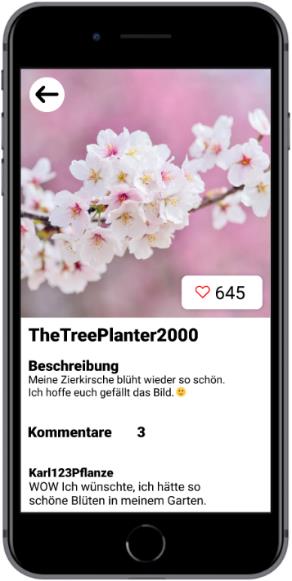
Figure 2. Mockups of GOOD GREEN. First picture: home screen; second picture: profile; third picture: plant forum. Student project GOOD GREEN, winter term 2020/2021 at Heinrich Heine University by P. Plassmann and L. Rach.
Lukas: “For me it was my first semester so I did not know how online seminars would be different to regular university life. Communication was easy thanks to meetings and email contact. I enjoyed the discussions with other students during the seminar and online lectures and received feedback on our project. It was also interesting to see what other projects were developed. The seminar was not related to my chemistry degree but I appreciated the change from my usual study topics as I enjoy creating graphics and design in my free time. I further enjoyed taking a test on what my gamer type would be which I remember to this day. Overall, I liked the atmosphere and organization of the seminar as there was always a possibility to communicate with other students and the lecturers.”
Sesu
Another project called Sesu (세수, Korean for clean one’s face or wash one’s face) by Charlotte Henschel (Modern Japanese, MA) focusses on skincare and the application of Korean skincare products as these products are especially popular in the skincare and beauty community (Figure 3). These products are often imported from Korea and the instructions may be only available in Korean or English, making it harder for (German) users to understand the application process. The app is aimed at helping with the translation of ingredients and correct application, focuses on ingredients congruent with EU guidelines, and aids the user in finding the best routine for him or her based on skin types and skin conditions. An avatar to identify with the digital representation of oneself is incorporated into the app. With challenges and quests such as developing a skincare routine according to one’s needs and achievements like using a specific product for a certain time frame the user gets to know their own skin. Quizzes are designed to further help users to learn about products in a fun way.



Figure 3. Mockups of Sesu. First picture: logo; second picture: profile; third picture: product information. Student project Sesu, winter term 2021/2022 at Heinrich Heine University by C. Henschel.
Charlotte: “I especially liked the discussions with other students during the seminar and seeing how they work on similar tasks in a different way based on their course of study—making oneself look outside the box and discover new ways of approaching things. I liked the atmosphere and feedback during the online sessions, it was laid back and harmonious. Being part of online sessions was not new for me as I participated in such meetings before (from Tokyo, based on my degree program). Sesu is related to East Asian cultures since my study course is focused on Japan, so I wanted to incorporate this aspect into my project. I also enjoyed learning about gamification from a different point of view as I already had experience with game studies and gamification.”
Routi
Another fun project was developed by Pascâl Klann (Social Sciences, BA) and Svenja Hein (German Studies & Communication and Media Studies, BA) called Routi (Figure 4). Motivating its users to be more active by walking around the city (in this case Düsseldorf, Germany). The activities are designed to be fun and exciting, the users can explore the city in an easy way and learn something about their surroundings by answering questions. The quizzes are based on important points discovered during the walks, exciting for tourists and also locals. Rewards can be obtained, for example, when the user visits certain points or uses the app in a specific time frame. Badges visualize some of these rewards to other users. Leaderboards are helpful in motivating competitive users.
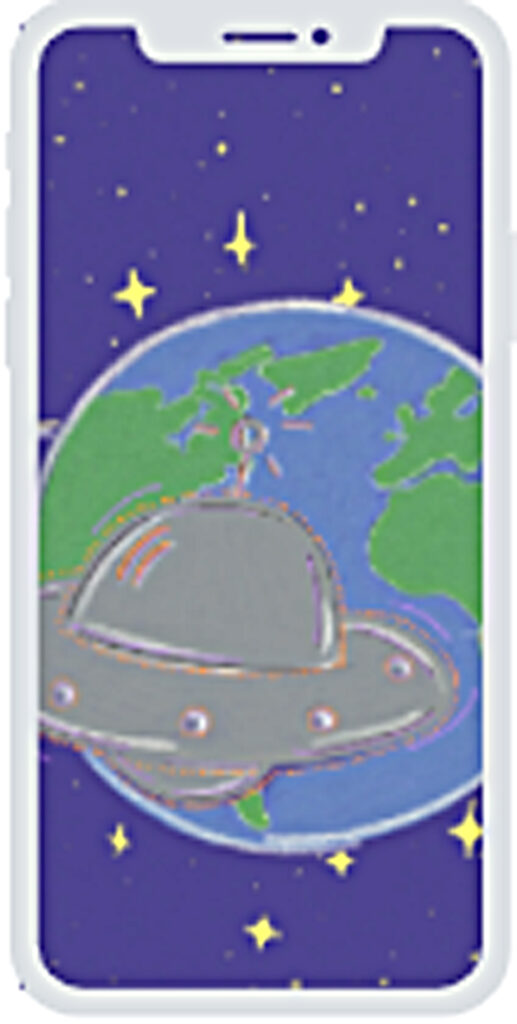
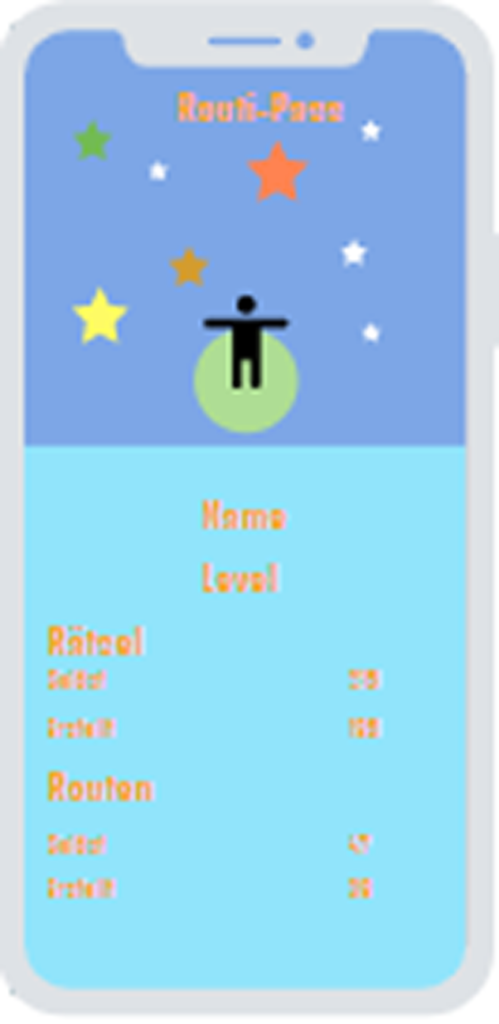

Figure 4. Mockups of Routi. First picture: home screen; second picture: profile; third picture: example route. Student project Routi, winter term 2020/2021 at Heinrich Heine University by S. Hein and P. Klann.
Pascâl: “I liked the lively discussions and educational presentations during the seminar. Gamification is interesting because people are motivated by the elements, for example, through comparison, one may be more motivated or by creating an avatar engagement is facilitated. I also learned how important it is to receive feedback for projects even during the transition stages to know where I am standing and what is missing for my project. Online meetings were helpful as the other students seemed more relaxed, maybe because they could work from home, a familiar environment. Documents could conveniently be shared and interaction with others was easy. With the dissolution of a traditional classroom people are not situated in a certain way but everyone is sitting at the same place, so to speak. The lecturers and students can be easily understood and the materials are on one’s own desktop. In my opinion, this helps with participation during the seminar and promotes concentration.”
HHU ideas competition and what’s next
The seminar has since been taught for five consecutive terms (three years) and due to its entrepreneurial touch was listed at the HHU ideas competition program of the CEDUS at Heinrich Heine University Düsseldorf. The competition honors students’ ambitions to found new businesses and their ideas as well as projects that are helpful for the environment, social aspects or creative areas of life. Of course, for this summer term 2023, the course is not missing.
References
Deterding, S., Dixon, D., Khaled, R., & Nacke, L. (2011). From game design elements to gamefulness: Defining gamification. In Proceedings of the 15th International Academic MindTrek Conference: Envisioning Future Media Environments (pp. 9–15). ACM.
Hamari, J., Koivisto, J., & Sarsa, H. (2014). Does gamification work?—A literature review of empirical studies on gamification. In Proceedings of the 47th Annual Hawaii International Conference on System Sciences (pp. 3025–3034). IEEE.
llhan, A., & Fietkiewicz, K. J. (2019). Learning for a healthier lifestyle through gamification: A casestudy of fitness tracker applications. In I. Buchem, R. Klamma, & F. Wild (Eds.), Perspectives on wearable enhanced learning (WELL) (pp. 333–364). Springer.
Koivisto, J., & Hamari, J. (2019). The rise of motivational information systems: A review of gamification literature. International Journal of Information Management, 45, 191–210.
Marszałek, W. (2022, January 5). Introduction to live-streaming in China. https://www.nanjingmarketinggroup.com/blog/live-streaming-china
Scheibe, K. (2018). The impact of gamification in social live streaming services. In G. Meiselwitz (Ed.), Social Computing and Social Media. Technologies and Analytics. SCSM 2018. Lecture Notes in Computer Science; 10914 (pp. 99–113). Springer.
Scheibe, K., & Zimmer, F. (2019). Game mechanics on social live streaming service websites. In Proceedings of the 52nd Annual Hawaii International Conference on System Sciences (pp. 1486-1495). ScholarSpace.
Xi, N., & Hamari, J. (2020). Does gamification affect brand engagement and equity? A study in online brand communities. Journal of Business Research, 109, 449–460.
Zichermann, G., & Cunningham, C. (2011). Gamification by design: implementing game mechanics in web and mobile apps. O’Reilly & Associates. Zimmer, F., Scheibe, K., & Zhang, H. (2020). Gamification on social live streaming service mobile applications. In G. Meiselwitz (Ed.), Social Computing and Social Media. Design, Ethics, User Behavior, and Social Network Analysis. HCII 2020. Lecture Notes in Computer Science; 12194 (pp. 184–197). Springer.
Cite this article in APA as: Scheibe, K. & Zimmer, F. (2023, January 25). Gamification in theory and practice seminar—Designing an app. Information Matters, Vol. 3, Issue 1. https://informationmatters.org/2023/01/gamification-in-theory-and-practice-seminardesigning-an-app/





